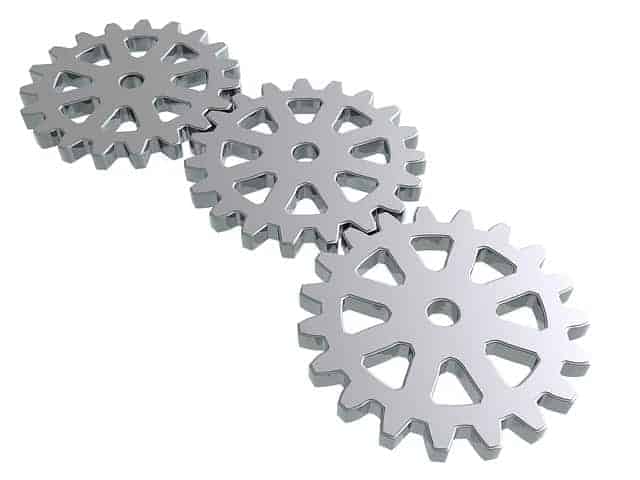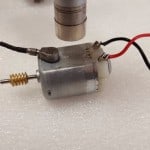Gear motors are systems that are essential when correctly and effectively moving most motor-powered machines. Given their importance to adjust the speed of the mechanism, it is essential for us to know what they are, their components and their main types.
Free download: Gear Motors: Choosing the best one for each project
What are gear motors?
Gear motors are mechanisms that adjust the speed of electric motors, leading them to operate at a certain speed. They are composed of a series of gears that make up a kinematic chain, working on a set of rotary parts.
Their main purpose is to allow the reduction from an initial high speed to a lower one without negatively affecting the mechanism. In addition to this adjustment, a gear motor is in charge of adjusting the mechanical power of a system.
Types of speed reducers and gear motors
If we focus on their internal disposition, we can classify motor speed reducers as follows:
Planetary speed reducers
Planetary gear motors are arranged into stages, each one having the following structure:
- Sun, the central gear. It rotates around the central shaft of the system
- Carrier, which holds up to 3 gears and meshes with the Sun
- Ring gear, that engages with the satellites
The central shaft can also be used as a center of rotation, making it easy to switch directions.
This type of gear motor is highly reliable. It is for this reason that it is used in many automatic transmissions. In addition, it is quite versatile, which makes it ideal for many sectors – from industrial automation to robotics.
Among the advantages of planetary gear motors we can find:
- Their great angular rotational stability and, therefore, their high level of precision.
- Their limited vibrations when dealing with various loads
- Their uniform transmission capabilities allow for a greater repeatability
One must also keep in mind that these motor speed reducers have a higher contact surface. This means that they engage more smoothly and generate lower noise levels.
This better engagement and a good torsional rigidity make this type of speed reducer more durable.
Among the many types of speed reducers and gear motors, their planetary variant are more durable
Worm drive
This type of industrial gear motor is simpler, since it transmits the motion of a worm wheel using an inline worm screw along its shaft.
The resulting gear ratio is calculated based on the number of teeth of the crown wheel and the indentations of the worm.
One of its greatest advantages is that it offers a high reduction with few stages, which would require several speed reductions when using conventional gears.
Parallel shaft gear motor
Parallel shaft gear motors are composed of pairs of the following types of gears:
- Spur gears, which are the most common
- Helical gears, which have a higher power and speed, but are more silent
- Double helical gears, also known as herringbone gears, which eliminate axial thrust
This type of speed reducer for electric motors has a compact design and a great ability to withstand a high torque and radial forces.
Furthermore, it can operate with a power of up to 200 kW, with a low vibration and noise level.
If you want to know more: Right angle gear motors and parallel shaft gear motors: performance comparison
Mechanical components that complement gear motors
Gear motors are composed of an electric motor and gears, which form the kinematic chain – the fundamental component of the gear ratio.
Kinematic chain
A motor’s speed reducer is composed of a speed reducer and its gears.
This speed reducer is basically a variable speed drive that allows for the speed to be reduced and increased at the output shaft.
Gears
Gears are toothed wheels made of metal or plastic (and new materials with each passing day) that transmit motion when meshing with each other.
They are defined by their number of teeth and their size. In addition, they may have straight-cut or helical teeth.
Do you want to know more about gears? Check out this post.
Motors
The five types of motors that see the most use in gear motors are:
- Brushed motors, with brushes normally made out of carbon. They are bidirectional and may be used with DC or AC. They have a service life of about 3000 hours.
- Asynchronous motors, which are brushless single-direction motors. They are highly limited.
- Synchronous brushless motors, which may be single-direction or bidirectional. They have a constant speed if the frequency of the power source is stable.
- Brushless DC motors that use a driver and can attain high speeds.
- Stepper DC brushless motors. They can be positioned with an average precision of 7.5º.
If you want to know more: Speed reducers: main applications and how to improve their operation
CLR’s gear motors: their features
Have you ever wondered where you could buy a gear motor? Then you should know that at CLR were have a track record of over 20 years designing and manufacturing gear motors.
This experience allows us to offer the best actuator solutions for each company. Our product catalog includes the most common electric gear motor models on the market, which additionally have specific user-defined characteristics based on the use that they will be given.
This means that we carry sealed speed reducers that prevent the ingress of particles.
Another characteristic of CLR’s gear motors is that its motors have different systems that minimize the generation of sparks in the slip ring, thereby reducing interferences with other devices. These systems can be different depending on the level of EMI interferences desired/required by the client for an application.
Having gear motors of the highest quality and the most innovative components to increase efficiency, such as those offered by CLR, is the most effective choice when guaranteeing the good operation of a motor system.Do you want to learn more, or are unsure about the type of gear motor you should choose? Do you need help with your mechanical engineering projects? Keep reading our blog or contact us! We will advise you, no strings attached.












Thank you for this amazing post. It was really helpful and informative. It also covered all the aspects of the gear motor and its components and was really easy and simple to understand.